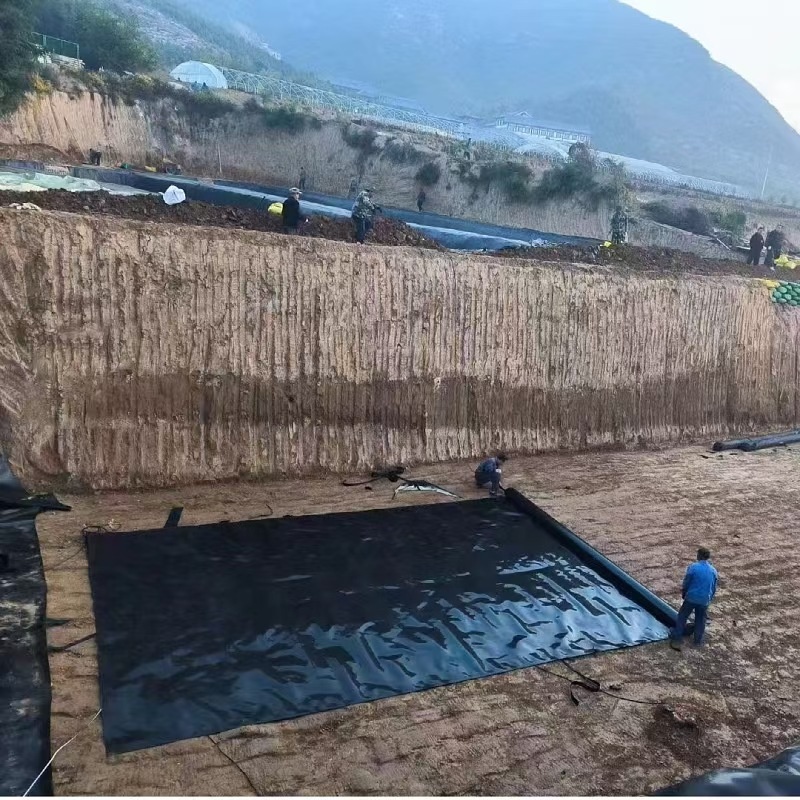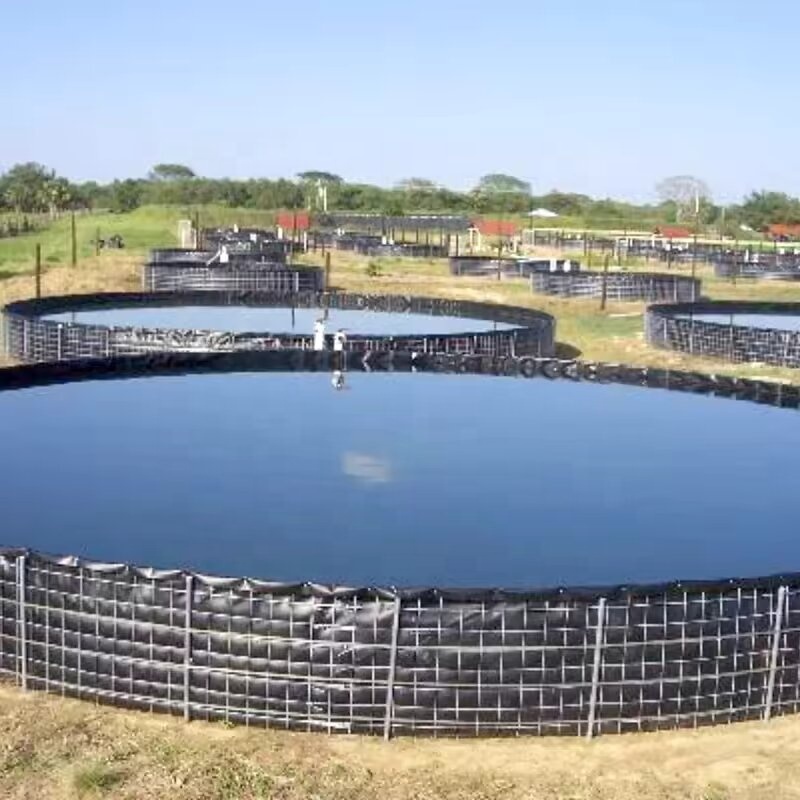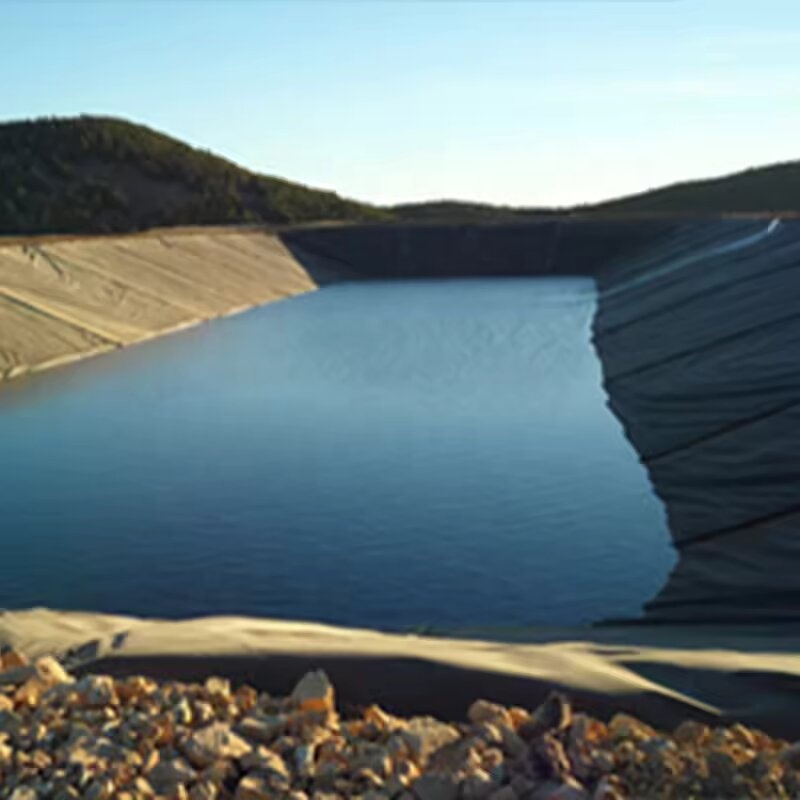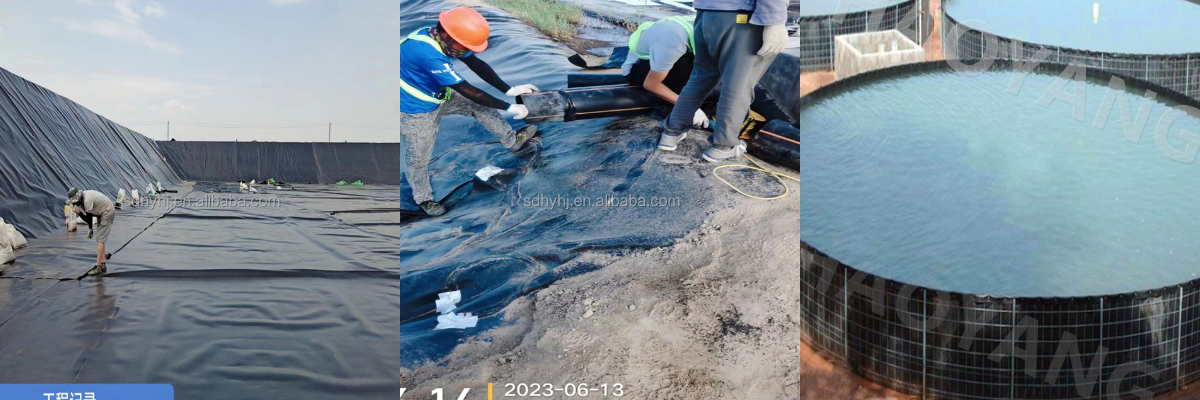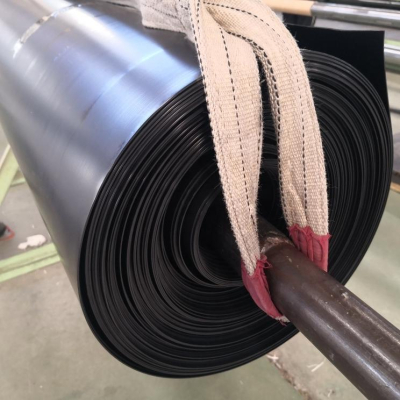0.5mm HDPE Geomembrane Pond Liner
Easy Installation & Cost-Effective
The balanced thickness offers flexibility and rigidity, simplifying welding, cutting, and laying processes. Material costs are lower than thicker alternatives, delivering excellent value.
Aging Resistance & Weatherability
UV stabilizers enable prolonged outdoor exposure, resisting degradation from ultraviolet light and extreme temperature fluctuations, ensuring a service life of 10–20 years.
Environmentally Friendly & Safe
Complies with food-grade or environmental standards (e.g., FDA-approved), non-toxic, and harmless—perfect for drinking water reservoirs, aquaculture, and other safety-critical applications.
0.5mm HDPE Geomembrane Pond Liner: A Lightweight and Cost-Effective Containment Solution
Introduction
Geomembranes are critical components in modern infrastructure, providing reliable containment for liquids and gases. The 0.5mm HDPE (High-Density Polyethylene) geomembrane pond liner offers a lightweight, flexible, and economical alternative to thicker liners, making it ideal for low-risk applications requiring durability without compromising budgets. This article explores the technical attributes, benefits, and real-world uses of 0.5mm HDPE geomembranes, supported by a detailed specification table and case studies.
What is a 0.5mm HDPE Geomembrane Pond Liner?
A 0.5mm HDPE geomembrane is a thin, impermeable membrane manufactured from virgin or recycled HDPE resin. Designed for moderate containment needs, it balances flexibility with resistance to environmental stressors. Its reduced thickness lowers material costs while maintaining performance in controlled environments.
Key Features:
Material: Virgin or recycled HDPE (food-grade or industrial options).
Thickness: 0.5mm (500 microns).
Surface Finish: Smooth or textured for slip resistance.
Additives: UV stabilizers, antioxidants, and carbon black for longevity.
6 Key Advantages of 0.5mm HDPE Geomembranes
1. Lightweight and Easy to Handle
At 0.5mm thickness, the liner weighs ~4.5 kg/m², simplifying transportation and installation. This is ideal for DIY projects or remote sites with limited equipment.
2. Cost Efficiency
Material costs are 30–40% lower than 0.75mm or thicker liners. Its flexibility reduces labor hours, as it conforms easily to irregular shapes without specialized tools.
3. Adequate Puncture Resistance for Low-Risk Environments
While thinner than 0.75mm variants, 0.5mm HDPE liners still resist punctures up to 200 Newtons (ASTM D4833), suitable for sites with minimal sharp debris.
4. Chemical Resistance for Non-Hazardous Applications
Resists mild acids, alkalis, and salts, making it viable for agricultural ponds, decorative water features, and greywater storage.
5. UV and Weather Durability
With UV stabilizers, it endures 3–5 years of direct sunlight without degradation, perfect for temporary or semi-permanent installations.
6. Environmental Compliance
Certified for non-potable water contact (e.g., NSF/ANSI 61 for greywater), ensuring safety for aquatic ecosystems.
Technical Specifications Table
| Parameter | Specification | Testing Standard |
Thickness | 0.50mm ± 5% | ASTM D5199 |
Material Density | 0.93–0.95 g/cm³ | ASTM D1505 |
Tensile Strength (MD/TD) | ≥14 MPa / ≥13 MPa | ASTM D6693 |
Elongation at Break | ≥550% (MD/TD) | ASTM D6693 |
Puncture Resistance | ≥200 N | ASTM D4833 |
Carbon Black Content | 2–3% | ASTM D1603 |
UV Resistance | 3,000 hours (ASTM G154) | ASTM D4355 |
Operating Temperature Range | -50°C to +70°C | Manufacturer’s specs |
Water Vapor Permeability | <0.1 g·cm/m²·day | ASTM E96 |
Applications of 0.5mm HDPE Geomembranes
1. Decorative Ponds and Water Features
Residential Gardens: Line koi ponds, fountains, or artificial streams.
Example: A UK landscaping firm reduced installation costs by 40% using 0.5mm HDPE for a private garden pond.
2. Aquaculture Nursery Tanks
House fish fry or shrimp larvae in controlled environments.
Benefit: Flexibility allows easy shaping for circular tanks.
3. Agricultural Irrigation Ponds
Store rainwater or runoff for small-scale farming.
Case Study: A Kenyan farm increased water retention by 85% with a 0.5mm HDPE-lined pond.
4. Secondary Containment for Fuel Tanks
Prevent spills from reaching soil in residential or commercial fuel storage.
5. Floating Covers for Reservoirs
Reduce evaporation and algae growth in water storage systems.
6. Landfill Capping
Act as a protective barrier in low-risk municipal waste sites.
Installation Best Practices
Step 1: Site Preparation
Remove rocks, roots, and vegetation.
Add a geotextile underlay (≥200g/m²) to cushion the liner.
Step 2: Welding Seams
Use hot-air welding for seams, achieving a bond strength of ≥8 N/mm (ASTM D6392).
Overlap seams by 75–100mm.
Step 3: Anchoring
Secure edges with concrete blocks or stake anchors spaced every 1–2 meters.
Step 4: Leak Detection
Conduct electric leak location surveys post-installation to identify breaches.
Maintenance Guidelines
Regular Inspections: Check for tears or punctures every 6 months.
Repair Kits: Use HDPE patches and adhesive for minor damages.
Avoid Chemicals: Limit exposure to strong solvents or hydrocarbons.
Environmental and Economic Impact
Sustainability
Recycled Content: Some manufacturers use up to 50% post-consumer HDPE, reducing plastic waste.
Water Conservation: Decreases evaporation by 30–50% in irrigation ponds.
Cost-Benefit Analysis
Initial Cost: 0.40–0.60 per square foot (material only).
Lifespan: 5–10 years in optimal conditions.
ROI: Payback period of 1–2 years for agricultural users via reduced water bills.
Limitations and Considerations
Not Suitable for High-Risk Environments: Avoid use in landfills, chemical plants, or areas with aggressive wildlife.
Temperature Sensitivity: May become brittle below -50°C; use additives for extreme climates.
Conclusion
The 0.5mm HDPE geomembrane pond liner excels in cost-sensitive, low-risk applications where flexibility and ease of installation are priorities. While it may not match the durability of thicker liners, its lightweight design and environmental compliance make it a valuable tool for sustainable development. Engineers, farmers, and homeowners alike can leverage this material to achieve efficient, budget-friendly containment solutions.


